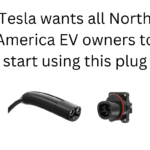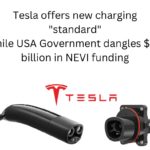In part the issue is one of globalization. All the major corporations have significant operations in other countries, and it’s sometimes tough to properly answer whether any specific globalized corporation is an “American Company” or not. For example, GM’s largest national market is China, their international headquarters are in Shanghai, the company does business in over 120 countries, it has manufacturing facilities in over 30 countries, and uses these brands in countries around the world: Baojun, Buick, Cadillac, Chevrolet, GMC, Daewoo, Holden, Isuzu, Jiefang, Opel, Vauxhall and Wuling. Is GM an American Company? Or is it a globalized company that has no loyalty to any given country?
Nearly a year ago, in February 2011, GM reaffirmed their commitment to having a strong presence of aggressive investment in China. At the time GM Chairman and CEO Dan Akerson was quoted saying “GM will continue to make China one of our priorities. We plan to introduce more than 20 new and upgraded models over the next two years, strengthen our local product development capability, expand our cooperation and sharing of technology with local partners, and lead in the introduction of new energy vehicles including the Chevrolet Volt extended-range electric vehicle. All of this is part of GM’s long-term commitment to the sustainable development of China’s automotive industry.”
In September 2011, an agreement was made between GM and SAIC to co-develop a new electric vehicle architecture in China. The Pan Asia Technical Automotive Center (PATAC), an already existing facility jointly owned by GM and SAIC, will be used to house the development. They stated at the time the target was delivery of products developed in China with Chen Hong, president of SAIC Motor, saying “Our agreement will enable SAIC and GM to take advantage of economies of scale and get new technology to the market faster than by going it alone. It will help bring about our goal of leading the automotive industry in new energy vehicles and our vision of sustainable transportation.” They described it as developing “key components” in China, to develop vehicles for sale in China under both GM and SAIC branding, and to use the newly developed vehicle architecture to develop vehicles to be sold around the world.
The same month the GM China Advanced Technical Center opened as the newest of GM’s network of technical centers around the world. This center, in Shanghai, was described as “the most comprehensive advanced automotive technology development center in China,” will work with the PATAC just mentioned, and will house four design organizations: the China Science Lab, Vehicle Engineering Lab, Advanced Powertrain Engineering Lab and Advanced Design Center. The first phase, the Advanced Materials Laboratory Building, includes a battery cell testing lab, battery material lab, metallography and electrochemical lab, cell fabrication lab, and micro-foundry and formability lab.
In December 2011, GM announced the second phase of the ATC was on track for completion in July 2012. GM said the organizations installed in the second of the ATC would “focus on advanced design, vehicle engineering, advanced powertrain development, urban mobility and manufacturing processes”
Also in December, GM announced opening a design studio in China. The center is located at GM’s headquarters in China, and is focused on developing vehicle designs for the Chinese market and other key global markets. Wulin Gaowa, Design Director of GM China Advanced Studio, said “The China market is playing a dominant role both in Asia and globally. As demand in China accounts for a bigger portion of GM’s global sales, our success in China is critical. We need to closely monitor and predict Chinese customers’ mobility behaviors, needs and preferences to ensure we are bringing the right products to the market.”
GM also issued many press releases over the last year bragging about strong sales growth in China.
As a globalized corporation some would say GM would be foolish to ignore China, especially considering how big the Chinese appetite is for buying cars and trucks.
Yet there are some who like to portray China’s growth as a threat to the U.S. and for example throw out phrases like “SAIC taking over development of GM’s electric vehicle platform means that the taxpayer money spent on the promise of a bright green future with loads of American jobs created is now going to benefit China.” In other words, the perception is that SAIC (which is owned by the Chinese government) is being handed electric vehicle technology on a platter. As SAIC’s Chairman said above, their corporate goal is to be the leader in developing electric vehicles and sustainable transportation.
The actual news, however, is more along the “Sputnik Moment” meme that Energy Secretary Chu has spoken of numerous times. China is moving quickly to develop a strong clean technology industry, and already has leading companies working on electric vehicle and battery technology. What’s most urgently needed is to strengthen the US clean technology industry. Many of the people making statements like in the previous paragraph are also slamming the Obama administration for meddling in the free market by subsidizing the companies that would be developing the US clean technology industry. By spurning grants and loans to domestic clean tech companies, where would those companies turn? There are many examples of formerly U.S. companies shutting down domestic operations to set up shop in China, to seek the grants and loans the Chinese government offers.
But let’s get back to the question at the top. Is GM going to build the Volt in China, and does it matter? If we go by the GM/SAIC press release, their plan is not precisely laid out. It’s clear they plan to develop electric vehicle components in China for use on vehicles sold in China, and to jointly develop in China an electric vehicle platform for sale around the world. GM has already set up a battery testing and development laboratory in Shanghai, and is working rapidly to develop other labs. Does that mean GM will stop development activities in the U.S.? Is this any different from Microsoft, or Google, or any other company setting up offshore research and development centers? All the globalized companies are doing this, so why is GM under special scrutiny here? If globalization is bad then it’s bad for any company to engage in globalization. If globalization is good, then its good for any company to engage in globalization.
- Highway design could decrease death and injury risk, if “we” chose smarter designs - March 28, 2015
- GM really did trademark “range anxiety”, only later to abandon that mark - March 25, 2015
- US Government releases new regulations on hydraulic fracturing, that some call “toothless” - March 20, 2015
- Tesla Motors magic pill to solve range anxiety doesn’t quite instill range confidence - March 19, 2015
- Update on Galena IL oil train – 21 cars involved, which were the supposedly safer CP1232 design - March 7, 2015
- Another oil bomb train – why are they shipping crude oil by train? – Symptoms of fossil fuel addiction - March 6, 2015
- Chevron relinquishes fracking in Romania, as part of broader pull-out from Eastern European fracking operations - February 22, 2015
- Answer anti- electric car articles with truth and pride – truth outshines all distortions - February 19, 2015
- Apple taking big risk on developing a car? Please, Apple, don’t go there! - February 16, 2015
- Toyota, Nissan, Honda working on Japanese fuel cell infrastructure for Japanese government - February 12, 2015












